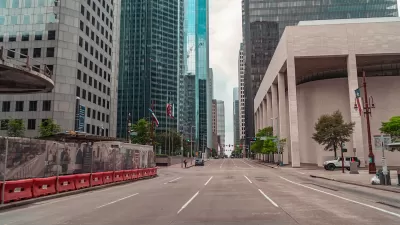Through advancements in technology, digital facades are becoming significantly easier to implement on a wide variety of architectural projects. Programmable surfaces maybe a big part of the future of buildings.
But planners will be challenged to keep up with the fast pace of development and the facades impact on urban settings.
"Digital facades, sometimes referred to as media facades, are nothing new, of course. Recent examples, such as UNStudio's Galleria Department Store (2004) in Seoul, trace their lineage through the earliest neon signs and architects' responses to 20th century media and computerization. But cheaper display technology, and the money to be made from digital outdoor advertising, suggest that more buildings will incorporate digital signage. Noncommercial uses of lighting, digital screens, and other programmable, reconfigurable elements are also on the rise.
Digital facade is a broad term, but these dynamic claddings typically feature LED lights or projection systems and might display images. Some newer, energy-efficient 'smart skins' control light and shading in response to the weather and can also display images. For example, RMIT University in Melbourne, Australia recently broke ground on its Design Hub, the exterior of which is lined with thousands of sandblasted glass tubes containing solar collectors. The tubes double as pixels when lighted. 'The direction is toward essentially all architectural surfaces being potentially programmable,' says William Mitchell, director of MIT's design lab."
FULL STORY: Planners, Designers Mull Implications of Digital Surfaces

Rethinking Redlining
For decades we have blamed 100-year-old maps for the patterns of spatial racial inequity that persist in American cities today. An esteemed researcher says: we’ve got it all wrong.

Planetizen Federal Action Tracker
A weekly monitor of how Trump’s orders and actions are impacting planners and planning in America.

Walmart Announces Nationwide EV Charging Network
The company plans to install electric car chargers at most of its stores by 2030.

New State Study Suggests Homelessness Far Undercounted in New Mexico
An analysis of hospital visit records provided a more accurate count than the annual point-in-time count used by most agencies.

Michigan Bills Would Stiffen Penalties for Deadly Crashes
Proposed state legislation would close a ‘legal gap’ that lets drivers who kill get away with few repercussions.

Report: Bus Ridership Back to 86 Percent of Pre-Covid Levels
Transit ridership around the country was up by 85 percent in all modes in 2024.
Urban Design for Planners 1: Software Tools
This six-course series explores essential urban design concepts using open source software and equips planners with the tools they need to participate fully in the urban design process.
Planning for Universal Design
Learn the tools for implementing Universal Design in planning regulations.
City of Moorpark
City of Tustin
City of Camden Redevelopment Agency
City of Astoria
Transportation Research & Education Center (TREC) at Portland State University
Regional Transportation Commission of Southern Nevada
Toledo-Lucas County Plan Commissions





























